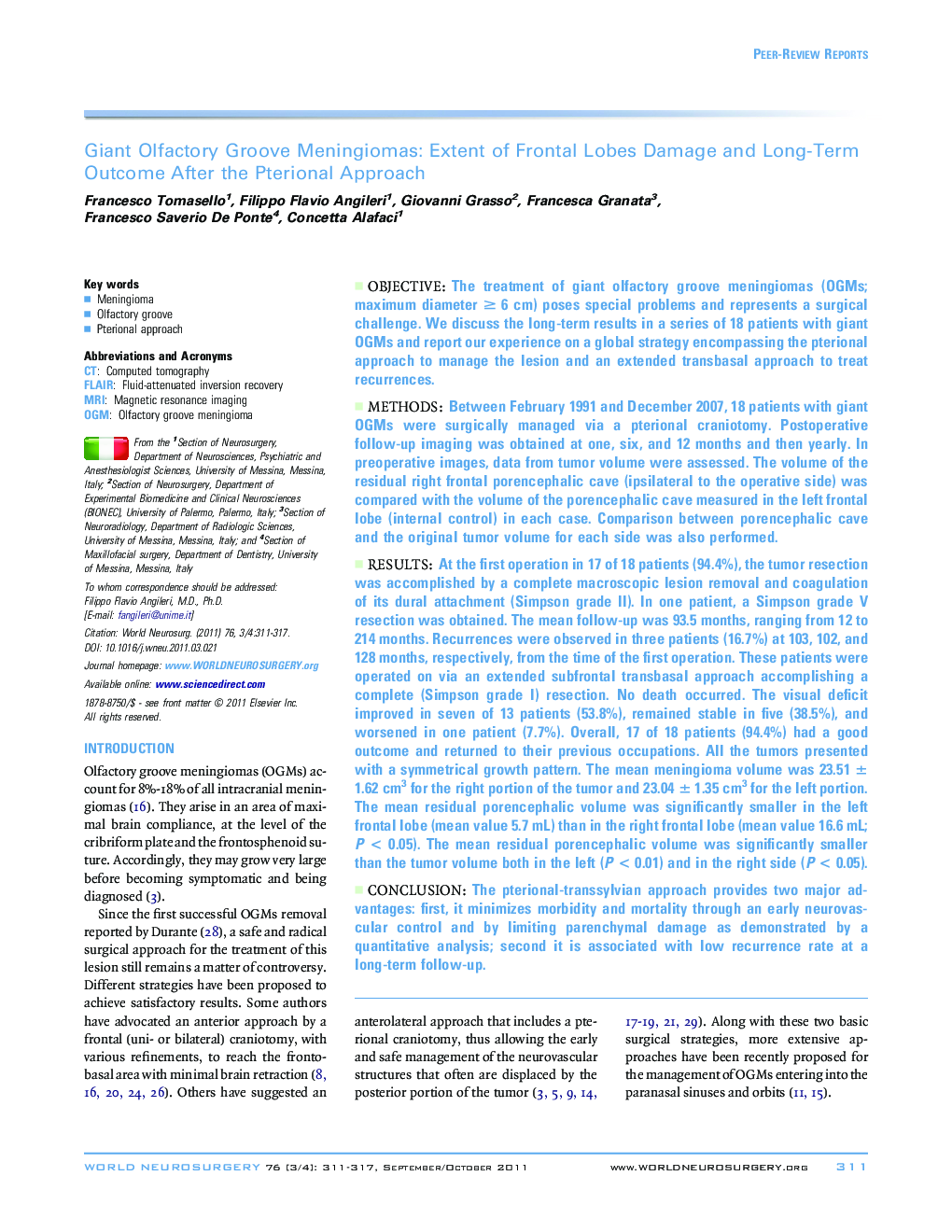| کد مقاله | کد نشریه | سال انتشار | مقاله انگلیسی | نسخه تمام متن |
|---|---|---|---|---|
| 3096791 | 1581484 | 2011 | 7 صفحه PDF | دانلود رایگان |

ObjectiveThe treatment of giant olfactory groove meningiomas (OGMs; maximum diameter ≥ 6 cm) poses special problems and represents a surgical challenge. We discuss the long-term results in a series of 18 patients with giant OGMs and report our experience on a global strategy encompassing the pterional approach to manage the lesion and an extended transbasal approach to treat recurrences.MethodsBetween February 1991 and December 2007, 18 patients with giant OGMs were surgically managed via a pterional craniotomy. Postoperative follow-up imaging was obtained at one, six, and 12 months and then yearly. In preoperative images, data from tumor volume were assessed. The volume of the residual right frontal porencephalic cave (ipsilateral to the operative side) was compared with the volume of the porencephalic cave measured in the left frontal lobe (internal control) in each case. Comparison between porencephalic cave and the original tumor volume for each side was also performed.ResultsAt the first operation in 17 of 18 patients (94.4%), the tumor resection was accomplished by a complete macroscopic lesion removal and coagulation of its dural attachment (Simpson grade II). In one patient, a Simpson grade V resection was obtained. The mean follow-up was 93.5 months, ranging from 12 to 214 months. Recurrences were observed in three patients (16.7%) at 103, 102, and 128 months, respectively, from the time of the first operation. These patients were operated on via an extended subfrontal transbasal approach accomplishing a complete (Simpson grade I) resection. No death occurred. The visual deficit improved in seven of 13 patients (53.8%), remained stable in five (38.5%), and worsened in one patient (7.7%). Overall, 17 of 18 patients (94.4%) had a good outcome and returned to their previous occupations. All the tumors presented with a symmetrical growth pattern. The mean meningioma volume was 23.51 ± 1.62 cm3 for the right portion of the tumor and 23.04 ± 1.35 cm3 for the left portion. The mean residual porencephalic volume was significantly smaller in the left frontal lobe (mean value 5.7 mL) than in the right frontal lobe (mean value 16.6 mL; P < 0.05). The mean residual porencephalic volume was significantly smaller than the tumor volume both in the left (P < 0.01) and in the right side (P < 0.05).ConclusionThe pterional-transsylvian approach provides two major advantages: first, it minimizes morbidity and mortality through an early neurovascular control and by limiting parenchymal damage as demonstrated by a quantitative analysis; second it is associated with low recurrence rate at a long-term follow-up.
Journal: World Neurosurgery - Volume 76, Issues 3–4, September–October 2011, Pages 311–317